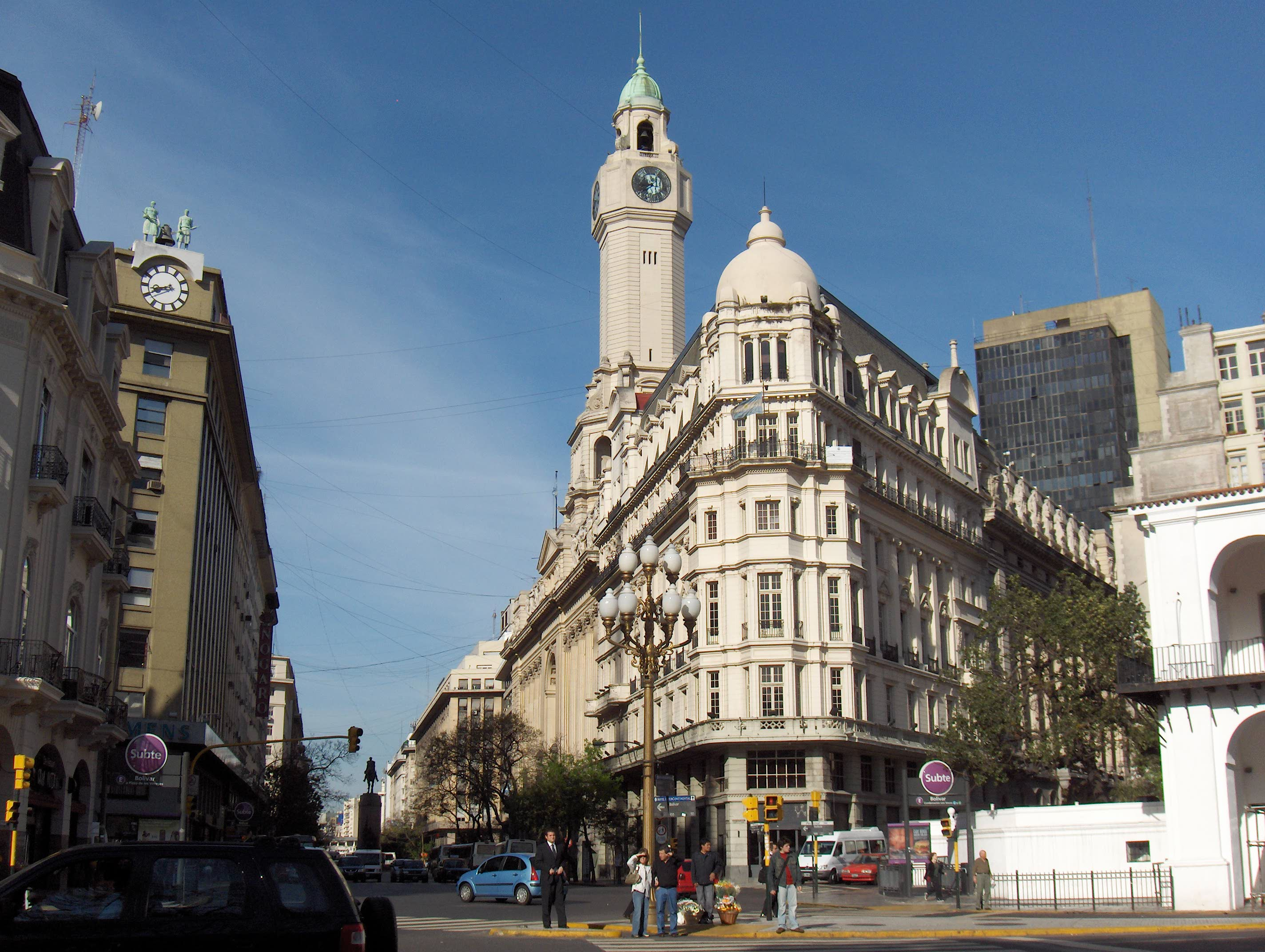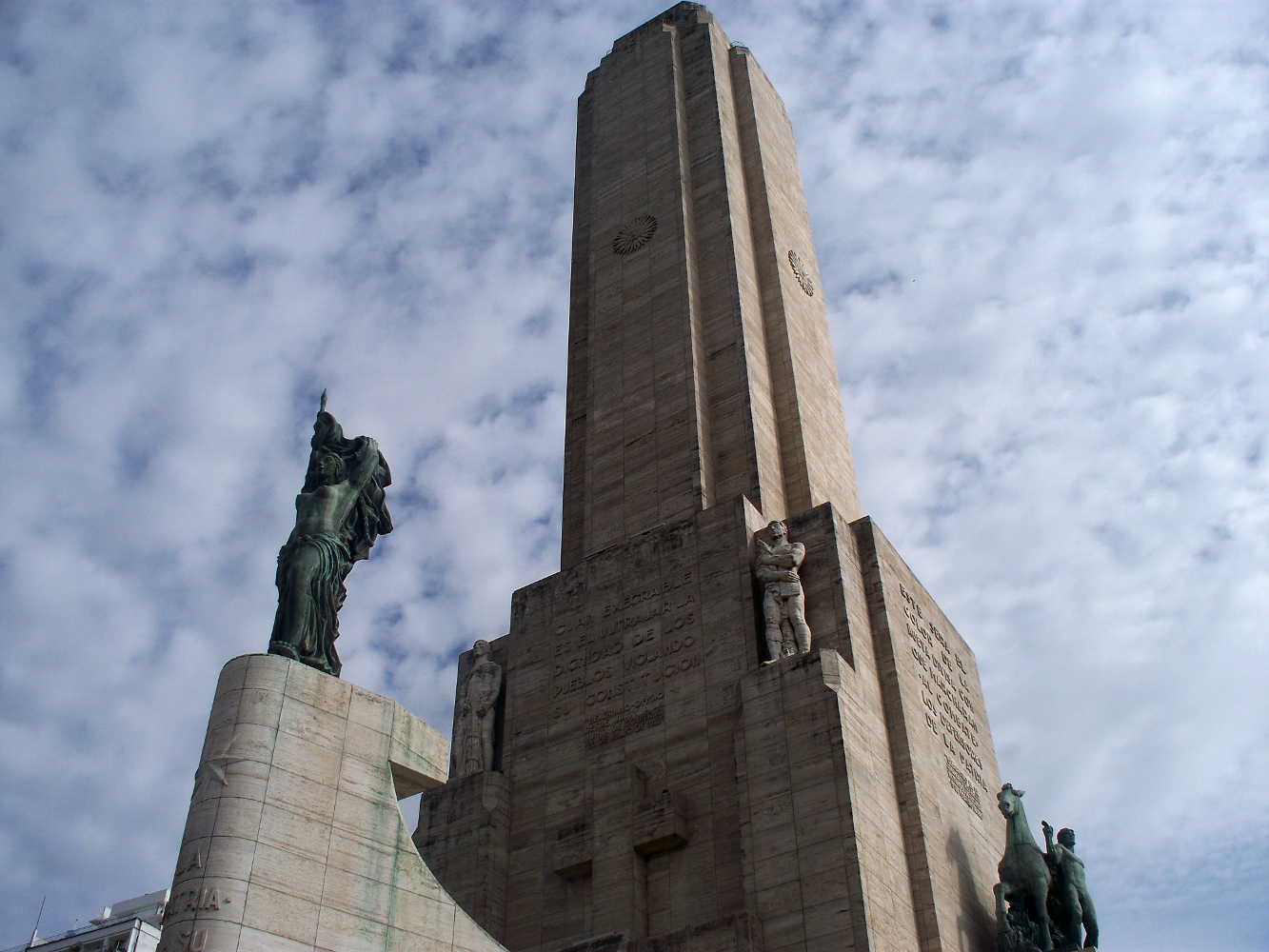|
Saint Ignatius Church (Buenos Aires)
Saint Ignatius' Church ( es, Iglesia de San Ignacio) is a Roman Catholic church situated at the Illuminated Block, in Buenos Aires's neighbourhood of Montserrat. The first building, which was made of adobe, was built by the Society of Jesus in 1675. The southern tower and the present facade were built in 1686, and the rest of the Church construction started in 1712. Today's church was completed in 1722 and consecrated in 1734. Saint Ignatius is the oldest church preserved in Buenos Aires, and was declared a National Historic Monument in 1942. On June 16, 1955, during a government campaign against the Church, after a failed revolution against Juan Domingo Perón government, Peronist mobs burnt most churches of Buenos Aires, including Saint Ignatius. Gallery File:Buenos Aires - Monserrat - Iglesia de San Ignacio.JPG, File:Primera Iglesia de Buenos Aires.JPG, File:Templo de San Ignacio - Buenos Aires.jpg, File:Torre con reloj en la primera Iglesia de Buenos Aires.JPG, File:Sa ... [...More Info...] [...Related Items...] OR: [Wikipedia] [Google] [Baidu] |
Parish
A parish is a territorial entity in many Christian denominations, constituting a division within a diocese. A parish is under the pastoral care and clerical jurisdiction of a priest, often termed a parish priest, who might be assisted by one or more curates, and who operates from a parish church. Historically, a parish often covered the same geographical area as a manor. Its association with the parish church remains paramount. By extension the term ''parish'' refers not only to the territorial entity but to the people of its community or congregation as well as to church property within it. In England this church property was technically in ownership of the parish priest ''ex-officio'', vested in him on his institution to that parish. Etymology and use First attested in English in the late, 13th century, the word ''parish'' comes from the Old French ''paroisse'', in turn from la, paroecia, the latinisation of the grc, παροικία, paroikia, "sojourning in a foreign ... [...More Info...] [...Related Items...] OR: [Wikipedia] [Google] [Baidu] |
Roman Catholic Church
The Catholic Church, also known as the Roman Catholic Church, is the largest Christian church, with 1.3 billion baptized Catholics worldwide . It is among the world's oldest and largest international institutions, and has played a prominent role in the history and development of Western civilization.O'Collins, p. v (preface). The church consists of 24 ''sui iuris'' churches, including the Latin Church and 23 Eastern Catholic Churches, which comprise almost 3,500 dioceses and eparchies located around the world. The pope, who is the bishop of Rome, is the chief pastor of the church. The bishopric of Rome, known as the Holy See, is the central governing authority of the church. The administrative body of the Holy See, the Roman Curia, has its principal offices in Vatican City, a small enclave of the Italian city of Rome, of which the pope is head of state. The core beliefs of Catholicism are found in the Nicene Creed. The Catholic Church teaches that it is th ... [...More Info...] [...Related Items...] OR: [Wikipedia] [Google] [Baidu] |
Society Of Jesus
, image = Ihs-logo.svg , image_size = 175px , caption = ChristogramOfficial seal of the Jesuits , abbreviation = SJ , nickname = Jesuits , formation = , founders = , founding_location = , type = Order of clerics regular of pontifical right (for men) , headquarters = Generalate:Borgo S. Spirito 4, 00195 Roma-Prati, Italy , coords = , region_served = Worldwide , num_members = 14,839 members (includes 10,721 priests) as of 2020 , leader_title = Motto , leader_name = la, Ad Majorem Dei GloriamEnglish: ''For the Greater Glory of God'' , leader_title2 = Superior General , leader_name2 = Fr. Arturo Sosa, SJ , leader_title3 = Patron saints , leader_name3 = , leader_title4 = Ministry , leader_name4 = Missionary, educational, literary works , main_organ = La Civiltà Cattoli ... [...More Info...] [...Related Items...] OR: [Wikipedia] [Google] [Baidu] |
Buenos Aires
Buenos Aires ( or ; ), officially the Autonomous City of Buenos Aires ( es, link=no, Ciudad Autónoma de Buenos Aires), is the capital and primate city of Argentina. The city is located on the western shore of the Río de la Plata, on South America's southeastern coast. "Buenos Aires" can be translated as "fair winds" or "good airs", but the former was the meaning intended by the founders in the 16th century, by the use of the original name "Real de Nuestra Señora Santa María del Buen Ayre", named after the Madonna of Bonaria in Sardinia, Italy. Buenos Aires is classified as an alpha global city, according to the Globalization and World Cities Research Network (GaWC) 2020 ranking. The city of Buenos Aires is neither part of Buenos Aires Province nor the Province's capital; rather, it is an autonomous district. In 1880, after decades of political infighting, Buenos Aires was federalized and removed from Buenos Aires Province. The city limits were enlarged to include t ... [...More Info...] [...Related Items...] OR: [Wikipedia] [Google] [Baidu] |
Argentina
Argentina (), officially the Argentine Republic ( es, link=no, República Argentina), is a country in the southern half of South America. Argentina covers an area of , making it the second-largest country in South America after Brazil, the fourth-largest country in the Americas, and the eighth-largest country in the world. It shares the bulk of the Southern Cone with Chile to the west, and is also bordered by Bolivia and Paraguay to the north, Brazil to the northeast, Uruguay and the South Atlantic Ocean to the east, and the Drake Passage to the south. Argentina is a federal state subdivided into twenty-three provinces, and one autonomous city, which is the federal capital and largest city of the nation, Buenos Aires. The provinces and the capital have their own constitutions, but exist under a federal system. Argentina claims sovereignty over the Falkland Islands, South Georgia and the South Sandwich Islands, and a part of Antarctica. The earliest recorded human prese ... [...More Info...] [...Related Items...] OR: [Wikipedia] [Google] [Baidu] |
Roman Catholic Archdiocese Of Buenos Aires
The Archdiocese of Buenos Aires (''Archidioecesis Bonaerensis'') is one of thirteen Latin Metropolitan archdioceses of the Catholic Church in Argentina, South America. The Archbishopric of Buenos Aires is the Primatial see (protocollary first-rank) of Argentina, although the incumbent Metropolitan may be outranked by Cardinals or more senior ones. On 13 March 2013, then-Archbishop Cardinal Jorge Mario Bergoglio was elected as Pope, under the name of Francis. The current archbishop, since 28 March 2013, is Mario Aurelio Poli, appointed by Pope Francis to succeed him as Archbishop of Buenos Aires. Statistics and extent At the beginning of the twentieth century, Buenos Aires was the second largest Catholic city in the world after Paris. In 2014 the Archdiocese pastorally served 2,721,000 Catholics (91.6% of 2,971,000 total) in an area of 205 km2 in 186 parishes and 183 missions with 783 priests (456 diocesan, 327 religious), 11 deacons, 1,915 lay religious (477 brothers, 1 ... [...More Info...] [...Related Items...] OR: [Wikipedia] [Google] [Baidu] |
Monserrat, Buenos Aires
Monserrat or Montserrat () is a neighbourhood in the east of the Buenos Aires CBD. The district features some of the most important public buildings in Buenos Aires, including city hall, the city legislature, Casa Rosada, the Colegio Nacional de Buenos Aires and the Libertador Building (Ministry of Defense), among others. Avenida de Mayo runs through the Monserrat district, connecting Plaza de Mayo and the Plaza de los Dos Congresos (Congressional Plaza). A block, or two, south of the Plaza de Mayo, the older section of Monserrat begins. This is Buenos Aires' oldest neighborhood and even today, very little of the cityscape there is less than a hundred years old (except along Belgrano Avenue), thereby making a nearly seamless transition to the likewise historic San Telmo district, to the south. History The Monserrat area traces its origins to the foundation of Buenos Aires itself, when, in 1580, Spanish Adelantado Juan de Garay disembarked on the area's shores. The Fort ... [...More Info...] [...Related Items...] OR: [Wikipedia] [Google] [Baidu] |
List Of National Historic Monuments Of Argentina
The National Historic Monuments of Argentina are buildings, sites and features in Argentina listed by national decree as historic sites. This designation encourages greater protection under the oversight of the ''Comisión Nacional de Museos, Monumentos y Lugares Históricos'' (National Commission of Museums, Monuments and Historic Places), created in 1940. In addition, provinces also have local lists of historic monuments. There are approximately 400 buildings or sites on the list. Most are buildings or sites from the pre-Hispanic or Colonial periods and some are battlefields and other locations associated with the independence of the country. In recent years the government has been making efforts to include sites on the list that reflect the country's industrial and immigrant heritage. The Commission has been criticized for not doing enough to preserve the buildings on the list, and only declaring sites as monuments after they have been altered or partly demolished. City of ... [...More Info...] [...Related Items...] OR: [Wikipedia] [Google] [Baidu] |
Juan Domingo Perón
''Juan'' is a given name, the Spanish and Manx versions of ''John''. It is very common in Spain and in other Spanish-speaking communities around the world and in the Philippines, and also (pronounced differently) in the Isle of Man. In Spanish, the diminutive form (equivalent to ''Johnny'') is , with feminine form (comparable to ''Jane'', ''Joan'', or ''Joanna'') , and feminine diminutive (equivalent to ''Janet'', ''Janey'', ''Joanie'', etc.). Chinese terms * ( or 娟, 隽) 'beautiful, graceful' is a common given name for Chinese women. * () The Chinese character 卷, which in Mandarin is almost homophonic with the characters for the female name, is a division of a traditional Chinese manuscript or book and can be translated as 'fascicle', 'scroll', 'chapter', or 'volume'. Notable people * Juan (footballer, born 1979), Brazilian footballer * Juan (footballer, born 1982), Brazilian footballer * Juan (footballer, born March 2002), Brazilian footballer * Juan (footballer ... [...More Info...] [...Related Items...] OR: [Wikipedia] [Google] [Baidu] |
Peronist
Peronism, also called justicialism,. The Justicialist Party is the main Peronist party in Argentina, it derives its name from the concept of social justice., name=, group= is an Argentine political movement based on the ideas and legacy of Argentine ruler Juan Perón (1895–1974). It has been an influential movement in 20th and 21st century Argentine politics. Since 1946, Peronists have won 10 out of the 13 presidential elections in which they have been allowed to run. The main Peronist party is the Justicialist Party. The policies of Peronist presidents have differed greatly, but the general ideology has been described as "a vague blend of nationalism and labourism" or populism. Perón became Argentina's labour secretary after participating in the 1943 military coup and was elected president of Argentina in 1946. He introduced social programs that benefited the working class, supported labor unions and called for additional involvement of the state in the economy. In addit ... [...More Info...] [...Related Items...] OR: [Wikipedia] [Google] [Baidu] |
List Of Jesuit Sites
This list includes past and present buildings, facilities and institutions associated with the Society of Jesus. In each country, sites are listed in chronological order of start of Jesuit association. Nearly all these sites have been managed or maintained by Jesuits at some point of time since the Society's founding in the 16th century, with indication of the relevant period in parentheses; the few exceptions are sites associated with particularly significant episodes of Jesuit history, such as the Martyrium of Saint Denis, Montmartre, Martyrium of Saint Denis in Paris, site of the original Jesuit vow on . The Jesuits have built many new colleges and churches over the centuries, for which the start date indicated is generally the start of the project (e.g. invitation or grant from a local ruler) rather than the opening of the institution which often happened several years later. The Jesuits also occasionally took over a pre-existing institution and/or building, for ex ... [...More Info...] [...Related Items...] OR: [Wikipedia] [Google] [Baidu] |

.jpg)





